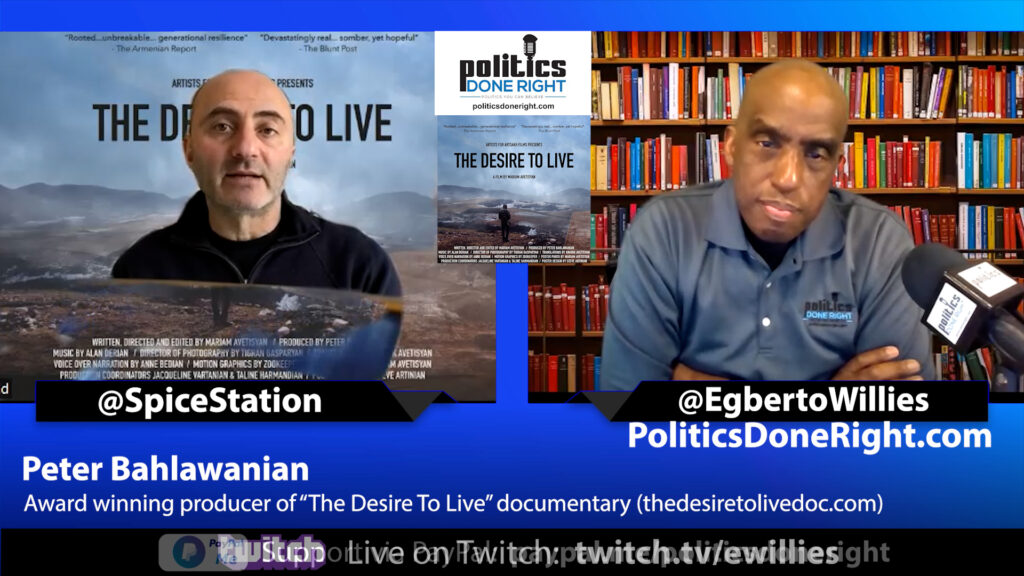Producer Peter Bahlawanian of the documentary “The Desire To Live,” directed by Mariam Avetisyan, explained the aftermath of the 2020 war on the Indigenous population living in Artsakh and how their livelihood has been affected and threatened until today, living in a world of uncertainty with very little resolve in the horizon.
Peter Bahlawanian speaks on Artsakh
Peter Bahlawanian is an award-winning producer/director with over 30 years of experience in almost every aspect of the entertainment industry, notably the creator of the Armenian Music Awards, the Human Rights Film Festival of America, The Desire To Live -Feature Doc & Web Series and Diaspora Films. Peter is a grandchild of orphans of the Armenian genocide and an active force in protecting the Armenian culture through music, art, and film. His work with director & editor Mariam Avetisyan produced an excellent documentary. “The Desire to Live” details the stories of the survivors of the war in the Republic of Artsakh.
From Wikipedia:
Artsakh, officially the Republic of Artsakh or the Nagorno-Karabakh Republic, is a breakaway state in the South Caucasus whose territory is internationally recognised as part of Azerbaijan. Artsakh controls a part of the former Nagorno-Karabakh Autonomous Oblast, including the capital of Stepanakert. It is an enclave within Azerbaijan. Its only overland access route to Armenia is via the 5 km (3.1 mi) wide Lachin corridor which is under the control of Russian peacekeepers.
The predominantly Armenian-populated region of Nagorno-Karabakh was claimed by both the Azerbaijan Democratic Republic and the First Republic of Armenia when both countries became independent in 1918 after the fall of the Russian Empire, and a brief war over the region broke out in 1920. The dispute was largely shelved after the Soviet Union established control over the area, and created the Nagorno-Karabakh Autonomous Oblast (NKAO) within the Azerbaijan SSR in 1923. In the leadup to the fall of the Soviet Union, the region re-emerged as a source of dispute between Armenia and Azerbaijan. In 1991, a referendum held in the NKAO and the neighbouring Shahumyan Province resulted in a declaration of independence. Ethnic conflict led to the 1991–1994 Nagorno-Karabakh War. Conflict has sporadically broken out since then, most significantly in the Second Nagorno-Karabakh War.
The Republic of Artsakh is a presidential democracy with a unicameral legislature. The country is reliant on and closely integrated with Armenia, in many ways functioning as a de facto part of Armenia. The country is very mountainous, averaging 1,100 metres (3,600 ft) above sea level. The population is 99.7% ethnic Armenian, and the primary spoken language is the Armenian language. The population is overwhelmingly Christian, most being affiliated with the Armenian Apostolic Church. Several historical monasteries are popular with tourists, mostly from the Armenian diaspora, as most travel can take place only between Armenia and Artsakh.
Watch the entire interview. You will find Peter passionate and engulfed in the Artsakh story and history that we should all know about. Unfortunately, we remain ill-informed about many conflicts that we could help with positive outcomes. Thanks to people like Peter Bahlawanian, we can tell the story from one who is intimately connected to its history.
